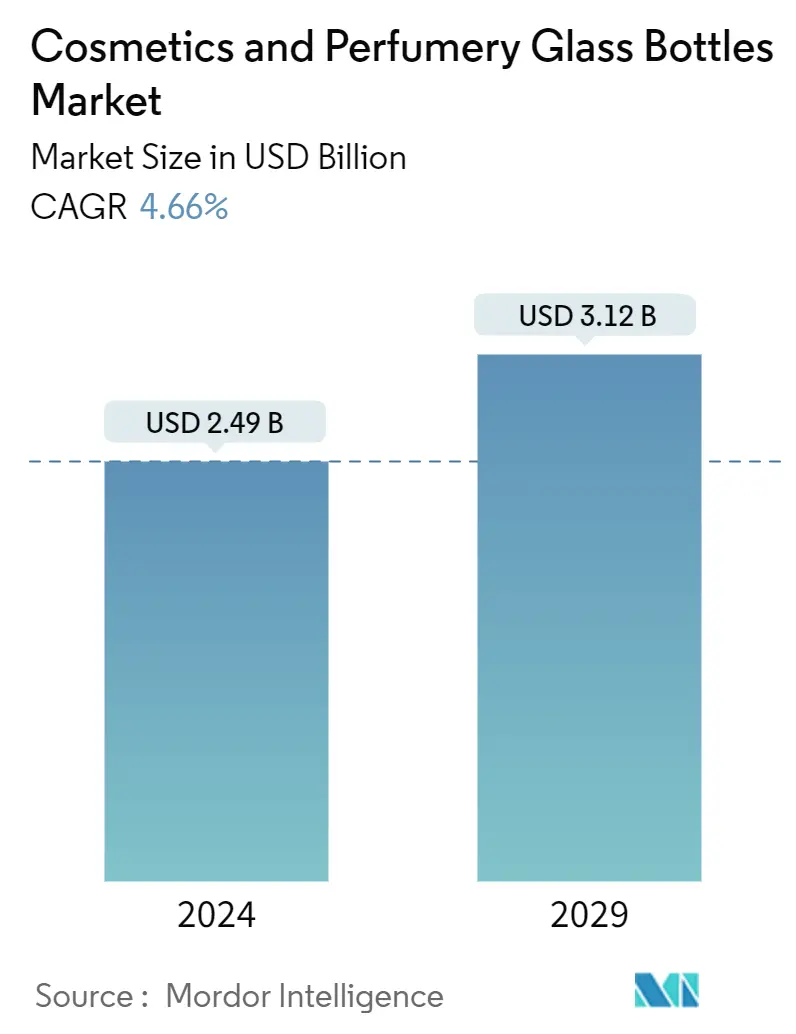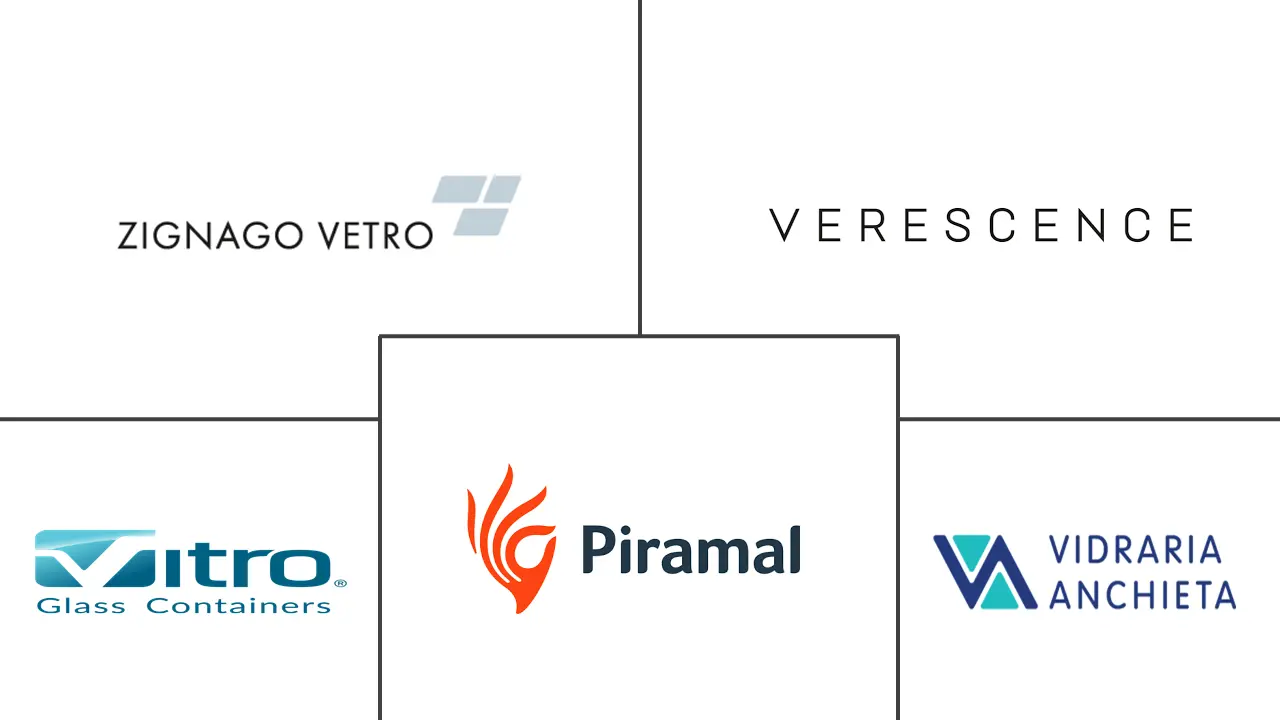Market Size of Cosmetics And Perfumery Glass Bottles Industry

| Study Period | 2019-2029 |
| Market Size (2024) | USD 2.49 Billion |
| Market Size (2029) | USD 3.12 Billion |
| CAGR (2024 - 2029) | 4.66 % |
| Fastest Growing Market | Asia Pacific |
| Largest Market | Asia Pacific |
Major Players
*Disclaimer: Major Players sorted in no particular order |
Need a report that reflects how COVID-19 has impacted this market and its growth?
Cosmetics And Perfumery Glass Bottles Market Analysis
The Cosmetics And Perfumery Glass Bottles Market size is estimated at USD 2.49 billion in 2024, and is expected to reach USD 3.12 billion by 2029, growing at a CAGR of 4.66% during the forecast period (2024-2029).
The cosmetic industry has the most varied packaging requirements among all sectors, and the packaging for cosmetics has been increasing steadily. The cosmetics industry now seems united to reduce the impact of plastic pollution with new thoughtful packaging strategies and refined formulations.
- Glass is one of the oldest packaging materials, which is nonporous and impermeable. It does not degrade, providing chemically inert properties. Glass adds to the premium appeal of the products and allows buyers to see the content and its color, giving them an idea of what they are getting. This is one of the main reasons why glass is used in the packaging of many cosmetics.
- The pace of demand for sustainable solutions is rapidly increasing as companies are actively searching for alternatives to conventional plastics commonly used in cosmetics packaging, including thermoset materials. These materials are not recyclable; therefore, they may face restrictions under various packaging regulations imposed by the government. Additionally, certain materials, such as ABS, are subject to upcoming region-specific conditions, prompting companies to shift toward more sustainable solutions such as glass packaging.
- The utilization of premium packaging plays a crucial role in elevating consumer satisfaction with a brand, and consequently, it increases the likelihood of them purchasing the product again and recommending it to others. The key players operating in the global cosmetic and perfume glass packaging market focus on expanding their product lines by introducing diverse luxury glass packaging products designed for cosmetic and perfume applications. This is expected to drive up the demand for this type of packaging over the forecast period.
- Traditionally, the preferred materials across cosmetic packaging have been aluminum and glass. Over time, these materials became expensive due to raw material prices and other factors and could not provide economically viable solutions for packaging products across mass consumption. That marked the advent of plastics as an option.
- The COVID-19 crisis demonstrated that the world may change quickly, causing significant fluctuations in demand. Sometimes, supply cannot keep up with demand. The personal care firms were under pressure to alter their product-innovation pipelines even before the pandemic, inspired by the ability of digital-native direct-to-consumer firms to move from concept to cabinet in less than a month.
